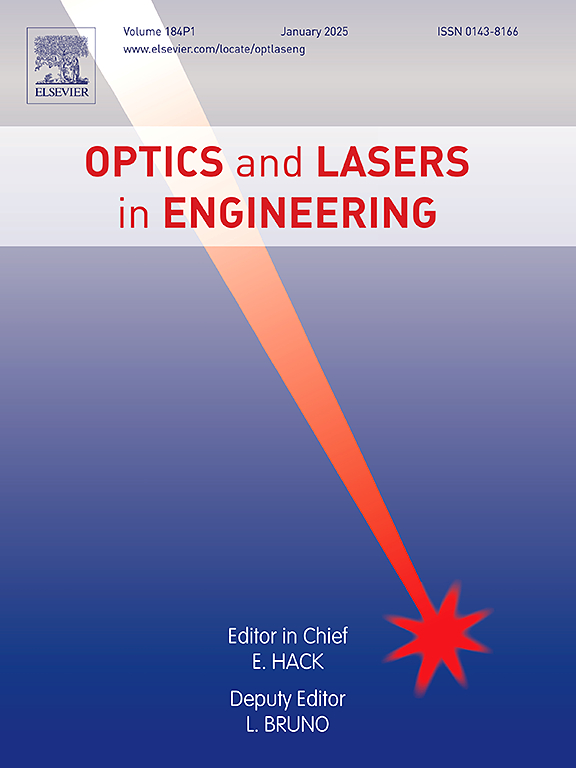随机数字编码的预频移法Phi-OTDR轻量解调
IF 3.7
2区 工程技术
Q2 OPTICS
引用次数: 0
摘要
脉冲编码技术可以有效地提高相敏光时域反射(Phi-OTDR)系统的性能,但对长距离传感的海量数据进行互相关解码带来了较长的额外时间成本。本文提出了一种预频移方法,用于随机数编码Phi-OTDR系统的轻量解调。该方法利用相位调制产生的一阶边带,可以有效地降低跳动信号的频率,从而降低对数据采样率的要求。研究了基于序列插值的互相关译码算法的原理,并从理论上分析了互相关运算带来的额外计算量。实验验证了预移频方案的有效性,将系统的采样率从500 MSps降低到100 MSps。采用传统的降采样技术(采样率分别为250 MSps、125 MSps和60 MSps)进行对比实验,验证了该方法的优越性。最后,在62.24 km处成功定位了不同频率的振动,空间分辨率为5 m。在此距离下,本文方法的算法时间开销仅为传统方案的13.28%。本文章由计算机程序翻译,如有差异,请以英文原文为准。
Pre-frequency-shift method for random number coding Phi-OTDR lightweight demodulation
Pulse coding technology can effectively improve the performance of the phase-sensitive optical time domain reflectometry (Phi-OTDR) system, but the cross-correlation decoding for mass data along a long sensing distance brings a lengthy extra time cost. In this paper, a pre-frequency-shift method is proposed for the lightweight demodulation in the random number coding Phi-OTDR system. By using the first-order sideband generated by the phase modulation, this method can effectively reduce the frequency of the beating signal, thus reducing the requirement of the data sampling rate. The principle of the cross-correlation decoding algorithm based on sequence interpolation is studied, and the extra computation caused by the cross-correlation operation is analyzed theoretically. In the experiment, the validity of the pre-frequency-shift scheme is verified, and the sampling rate of the system is reduced from 500 MSps to 100 MSps. Comparative experiments using conventional down-sampling techniques with sampling rates of 250 MSps, 125 MSps, and 60 MSps validate the superiority of the proposed method. Finally, the vibrations of different frequencies are successfully located at 62.24 km with a spatial resolution of 5 m. At this distance, the algorithmic time cost of the proposed method is only 13.28 % of that of the traditional scheme.
求助全文
通过发布文献求助,成功后即可免费获取论文全文。
去求助
来源期刊

Optics and Lasers in Engineering
工程技术-光学
CiteScore
8.90
自引率
8.70%
发文量
384
审稿时长
42 days
期刊介绍:
Optics and Lasers in Engineering aims at providing an international forum for the interchange of information on the development of optical techniques and laser technology in engineering. Emphasis is placed on contributions targeted at the practical use of methods and devices, the development and enhancement of solutions and new theoretical concepts for experimental methods.
Optics and Lasers in Engineering reflects the main areas in which optical methods are being used and developed for an engineering environment. Manuscripts should offer clear evidence of novelty and significance. Papers focusing on parameter optimization or computational issues are not suitable. Similarly, papers focussed on an application rather than the optical method fall outside the journal''s scope. The scope of the journal is defined to include the following:
-Optical Metrology-
Optical Methods for 3D visualization and virtual engineering-
Optical Techniques for Microsystems-
Imaging, Microscopy and Adaptive Optics-
Computational Imaging-
Laser methods in manufacturing-
Integrated optical and photonic sensors-
Optics and Photonics in Life Science-
Hyperspectral and spectroscopic methods-
Infrared and Terahertz techniques
 求助内容:
求助内容: 应助结果提醒方式:
应助结果提醒方式:


